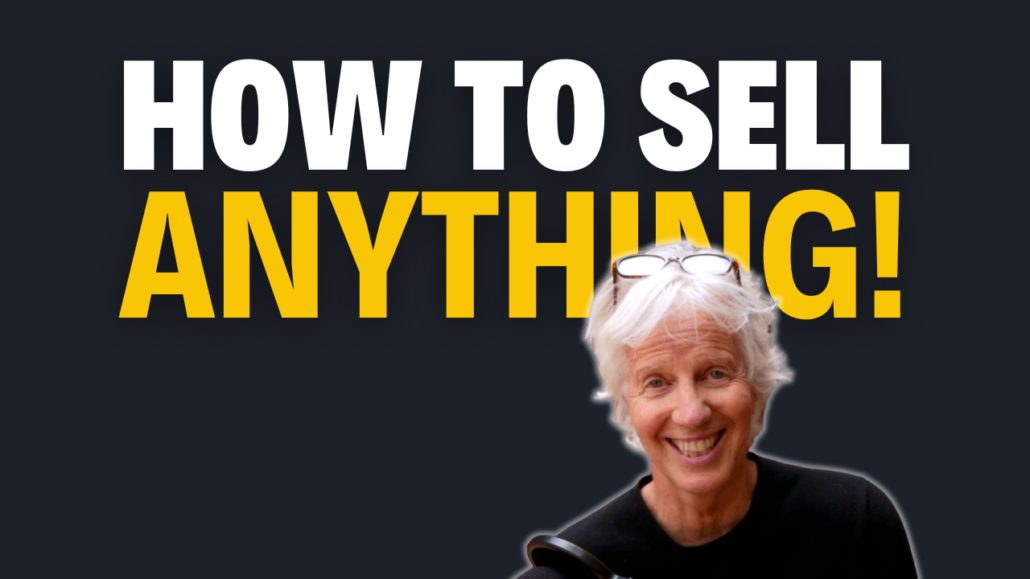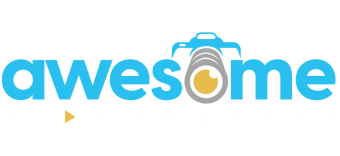
191. What Makes People Buy? How to Build the Chain of Beliefs That Sells Your Offer
Before anyone buys from you, they need to believe.
Not just in your offer—but in themselves, their problem, the possibility of change, and the method you use to get them there.
That’s the idea behind the Chain of Beliefs—a simple but powerful framework that can turn your videos, your content, and your messaging into a client-converting machine.
In this episode of The Standout Business Show, I’m pulling back the curtain and showing you exactly how I applied the Chain of Beliefs to my own offer—Mic Drop Moments—with the help of my CMO-in-your-pocket (aka ChatGPT).
Here’s what you’ll learn:
- What the Chain of Beliefs is—and why it’s the key to marketing that actually works
- The 5 belief categories your audience must adopt before they’ll say yes
- A behind-the-scenes look at how I identified my audience’s belief gaps
- How you can use this same framework to clarify your content strategy and guide your audience toward buying
If you’ve ever felt like your content is scattered, or your audience just isn’t “getting it,” this episode will give you the clarity you’ve been missing.
🎧 Tune in and learn how to build the belief bridge between where your audience is now—and where they need to be to work with you.
Resources
Past episodes mentioned:
Episode 186: “5 Signs That You’re the Best at What You Do—But Still Getting Overlooked”
Episode 183: “The Content Marketing Myth: Why More Content ≠ More Clients”
Episode 185: “How to Use Video to Sell Your Expertise”
If you’re the best-kept secret in your industry, it’s time to change that.
Because when you start showing up with clarity, confidence, and the right content—your ideal clients won’t just notice you. They’ll choose you.
Don’t miss your chance to get a free video brand assessment to start creating videos that actually work for your business.
Schedule your video brand assessment here >
Thanks for tuning in. If you found this episode helpful, share it with another expert entrepreneur who’s ready to stop blending in.
And I’ll see you next time—on The Standout Business Show.
Transcript:
Brad Powell:
Before someone buys from you, before anyone buys from you, they have to believe a lot of things, not just in your offer, but they have to believe in themselves, they have to believe that they can find a solution to their problem and they need to believe in the future that you’re pointing them towards. If even one of these beliefs is missing, sale does not happen, and that is what today’s episode is all about how to build these beliefs and how I have been applying it right here on this podcast. It right here on this podcast. Welcome to the Standout Business Show. I’m your host, brad Powell, and today I am talking about what makes people buy and how to build the chain of beliefs that will sell your offer for you.
Brad Powell:
I heard about this little-known but truly transformative concept called the chain of beliefs from my podcast coach and brilliant podcast marketer, jeremy Enns, and the premise is really simple. It goes like this Before making a purchase, every buyer must hold a series of beliefs that give them the confidence to move forward with their purchase, and these beliefs form a chain, and if one or more of the required beliefs are missing, the chain is broken and they won’t proceed. These beliefs fall into a number of different categories, including beliefs about themselves, beliefs about their current situation and the choices available to them, the future that awaits them on the other side, your approach to solving their problem, your offer and, finally, you. If they hold these beliefs, sales are simple, which means the job of your marketing becomes simple. All you have to do is identify the chain of beliefs your ideal buyers must have before buying, and then you start using your content marketing to systematically build those beliefs. So the good news is that your content is probably already building some of your buyer’s beliefs, but the bad news is that you’re probably missing one or two more links in the chain.
Brad Powell:
So, in my case, the process that I used to address this was that I wanted to run a belief audit, and I used this exact framework to audit my own content strategy for this show and identify the belief gaps in my current messaging. I sat down with my good friend ChatGPT and I literally plugged in the text from this premise all the stuff that I just described here is this thing called chain of beliefs. This is what it is, this is what it means, and then I said I’m doing this podcast. I want you to take a look at my podcast and all these episodes from the past, and I want you to tell me, first of all, what are the beliefs that my audience needs to have in order to say yes to my offer. And then I said and my offer, by the way, is Mic Drop Moments so I want people to say yes to coming and working with me and being interviewed by me, and we sit down for an hour and they get a month’s worth of content. And what do they need to believe in order to say yes to doing that work with me? So I plugged all this in and I got all this great feedback. Like here they are.
Brad Powell:
So I’m gonna go through some of the answers that I got, which was number one belief in themselves. My audience needs to believe that they have valuable expertise worth showcasing and they need to believe that they’re ready to be the face of their brand, even if they don’t think that they’re a natural on camera. This comes from the notion that many expert founders don’t believe that they’re good on camera, so I have to help them overcome that limiting belief. Number two is belief in their situation. Things like they believe they’re spending way too much time creating content with little or no return. Number three belief in the desired future. So I want to get them to a place where they believe that video can be the simplest, fastest way to grow trust and authority. Commonly, my audience is in a place where they want to be seen, but they feel unsure that it’s going to pay off for them, so I need to help them over that particular hurdle. Then they need to believe in my method Things like believing that the right system can turn an hour of talking into a whole month of content and that my mic drop moments method is based on conversations that they’re already having. And, lastly, belief in me and my offer and have them come to a place where they’re thinking this offer is going to save me time and give me better results. In order to build this last link, I need to provide trust and proof and clear messaging. So they’re going. Yeah, I’m totally ready to buy now.
Brad Powell:
And, by the way, there was a lot more in the responses here, like a really healthy list of all the different beliefs that my audience needs to have, which gives me tons and tons of ideas for how to create content in the future. There was no shortage of ideation in this particular part of the process. Then I wanted to know how was I doing with this show. Can we do an audit of previous episodes and see where I’m already helping people reach these beliefs? So here’s three examples of feedback that I got on episodes that have already happened, that are already doing a good job.
Brad Powell:
So belief about themselves category number one. Now. My audience must believe that they have valuable expertise worth showcasing and believe that by becoming the face of their brand, they’re going to be a great asset for their business. And my GPT coach said episode number 186, which is called five signs that you’re the best at what you Do but Still Getting Overlooked. Well, this episode helped my listeners recognize their own value and the importance of visibility. So I get a little gold star for that episode.
Brad Powell:
Now belief number two, which is beliefs about their current situation, which is all about how they need to feel that their current marketing efforts are insufficient and they recognize the need for change. So in order to help build that belief, it pointed to episode number 183, which was called the content marketing myth why more content does not equal more clients. And this episode challenged the notion that more content leads to more clients and it highlighted the inefficiencies in the standard current strategies that a lot of my audience is currently using. So gold star for that one. And, by the way, if you want to go back and listen to any of these episodes, you don’t have to write these down. I’ve got links to each episode in the show notes.
Brad Powell:
And the third example that I’ll share is the beliefs about the desired future, which is all about envisioning a future with enhanced visibility, authority and client attraction through effective video marketing. This is what I want to help my audience get to, and it pointed to episode number 185, which is called how to use video to sell your expertise, and this episode was all about showing how video can be this powerful tool that showcases your expertise and, in fact, does attract clients. So it was cool to get this positive feedback, and actually the full amount of feedback that I got in this stage was I got two episode examples for each of the belief systems, so I was feeling pretty good like I’m already doing a fairly good job. However, I did get some insight on where I could improve. So, for example, too much content was focused on methodology and not enough to on belief in self. So the message is that I need more episodes that feature client success stories and highlight their transformations and boost confidence in my listeners.
Brad Powell:
And the other recommendation was to share more case studies or testimonials that paint a vivid picture of the benefits that are achieved from my Mic Drop service. So this is actually leading me to restructure my planning for future episodes and shifting the focus into a much more belief-driven content strategy. So I would encourage you to run your own belief audit, and this can be pretty simple as just looking at your last five pieces of content and asking the question what beliefs are you building in your content and what’s missing, and where are the gaps and where do you need to fill in. And if you want to use the same process that I used with this belief audit template and using ChatGPT, just find me on LinkedIn and DM me the word belief and I’ll send you the same framework that I used. So I’ll leave you with this.
Brad Powell:
If you want your content to sell without sounding salesy, build the beliefs that make your audience ready to buy.


